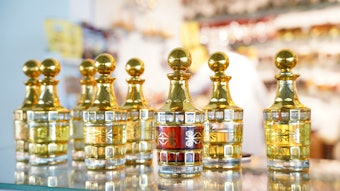
Read this article in its entirety in the May 2020 digital edition. . .
In the past, psychology has generally been dismissed as too soft a science to be seriously integrated with cosmetic chemistry—much like traditional medicine and folklore remedies. These doctrines were not lost in the marketing of products, since consumer behavior clearly is driven by emotion, but the application of psychology and emotion has been slow to reach the bench; until more recently.
A resurgence in these fields is taking place, partly thanks to advances in measurement techniques that draw us closer to hard science. We’re uncovering phytochemical truths behind folklore and quantifying the depths of human emotions.
John Jimenez (JJ), senior exploration scientist for Belcorp, Colombia, is especially interested in the latter. He’s been conducting work in this area for years and offers the following insights insofar as how emotions are connected with beauty, and they could be used to supercharge cosmetics.
C&T: How do emotions affect beauty?
JJ: This question is interesting because emotions can affect beauty and vice versa. First of all, there are many scientific publications in the field of psychology about types and classes of emotions. To start, we can cite the work of psychologist Paul Ekman, who in 1972 defined six basic emotions: anger, disgust, fear, happiness, sadness and surprise. Later theories and scientific papers identified other emotions such as shame, excitement, contempt, pride, satisfaction and fun, among others. In 1980, psychologist Robert Plutchik introduced a classification model known as the “wheel of emotions,” which is interesting because it shows how emotions can be combined with each other.
Science says that an emotion is a complex psychological state that includes an experience, a physiological response and a behavioral or expressive response (per Hockenbury and Hockenbury, 2007). If you have ever felt a knot in your stomach or strong palpitations in your heart due to anxiety or fear, then you know emotions can also cause important physiological reactions. It is precisely within these physiological responses where we see emotions interact with beauty.
To name just a few examples, cortisol is a hormone that is released in response to stress generated by emotions, and there are many publications in recent years about the effects of cortisol on the biochemical functions of the epidermis, dermis and hypodermis thanks to the effect this hormone has on the modulation of Nerve Growth Factor (NGF). Therefore, the effect of cortisol on NGF and other molecular targets has a direct effect on hydration processes, melanin synthesis, collagen production and adipogenesis. This explains why some people who live under conditions of chronic stress shown more signs of aging than others.
Another example of recent interest to the cosmetic industry is oxytocin because its effects on the biochemical processes in skin are still not entirely clear. There are several scientific studies about how this hormone can promote a sense of relaxation and tranquility, as well as its expression during the process of meditation.
Cosmetic science also has made countless findings on the effects of beta-endorphins, which can be stimulated by positive emotions and have effects in some biochemical processes in layers of the skin. In summary, we can say that emotions produce physiological responses that induce the production and release of certain molecules that will have positive or negative effects on biochemical processes in the skin related to beauty.
From another perspective, the wellness trend is booming, and we are seeing great advances supported in neuroscience on how, by improving one’s perception of their own beauty—which can be achieved by using highly effective cosmetic products, surprising immediate effects, differentiated sensory textures with “wow” effects, and fragrances designed under the premises of aromatherapy, etc.—we can positively impact their emotions.
There are many ways to validate whether a product is affecting emotion, which mainly consist of measuring the physiological responses produced by an individual. Cosmetic companies are becoming innovative in this field. For example, brain scans have shown that the amygdala, part of the limbic system, plays an important role in the emotional physiological response in fear situations. Also, cortisol levels in saliva can change depending on the hour of day; and this evaluation early in the morning is a well-known methodology. Electrodermal activity also can be assessed by perspiration changes in the skin on an individual’s finger.
The study of haptics, or the science of touch, also has made incredible advances; for instance, in November 2019, a smartphone was launched that allows users to feel clicks, vibrations and other tactile stimuli. In fact, scientists have studied haptics for decades and know quite a bit about the biology of touch. They know, for example, what kinds of receptors are in the skin and how the nerves exchange information between the central nervous system and the point of contact. Therefore, new research is turning to new forms of evaluation.
Finally, facial expressions are also an amazing field applied in emotion evaluation. The human face registers a wide variety of emotional states; from observable changes such as a smile, to unobservable changes such as muscle movements.
C&T: How is the industry applying emotion to connect consumers with products?
JJ: The industry is using these connections in two ways. First, we are seeing major companies of active ingredients and excipients, and manufacturers of finished products, together with universities and research centers, developing new ways of evaluating the acceptability and preference of formulations, fragrances and products based on physiological responses produced by the emotions that these products generate. . .











